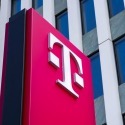
T-Mobile's top networking executive offered a decidedly tepid outlook on open RAN technology.
"It's not ready for prime time for us," said T-Mobile's Neville Ray at an investor event Tuesday. "For us, I know the fastest and quickest and most meaningful way I can roll out a 5G network at real pace is what we're doing today. I'm not going to go and chase a bunch of capital efficiencies which I'm not sure exist at this point."
Ray's comments are noteworthy in light of growing industry chatter around the open RAN trend. Open radio access networks (RANs) promise to decouple hardware and software, allowing operators to mix and match different network components from different vendors. Proponents of the technology – including Japan's Rakuten and Dish Network in the US – have argued that the technology can reduce overall costs by 40% or more. However, as Ray noted, both of those companies are building networks from scratch and do not need to worry about legacy 3G and 4G networks.
"Today, I buy a solution from an Ericsson or a Nokia or a Samsung; it's warrantied. I have one neck to choke. If something goes wrong, I know where to go. In an O-RAN environment, you have to do a lot more heavy lifting as the operator," he said. "O-RAN for me is interesting at this point in time, but there's a host of unanswered questions around IP [intellectual property], around R&D, around system integration."
Ray added that Rakuten purchased an open RAN systems integration company for those reasons.
"How do you protect and drive R&D across that ecosystem?" Ray continued. "Who's ultimately responsible for all of the integration? And whose neck do you choke when things go wrong? Your own. So that's a lot to work through."
He concluded: "We're always for open standards and open interfaces and all those pieces. But the commercial model behind O-RAN – I think everybody has flagged these capital savings – I think that's a big TBD, to be perfectly frank. Because once folks get their head and arms around the integration costs of the various vendors – who carries all that cost, who protects all of that as you go forward, and makes sure that the R&D investment is happening in alignment across what can be a series of competing vendors – there's big challenges."
Importantly, Ray's statements could be positioned almost in real time against a number of open RAN supporters. For example, Foreign Policy hosted an open RAN event at the exact same time as the event featuring T-Mobile's Ray, where FCC Commissioner Geoffrey Starks spoke glowingly about the technology. He also argued that open RAN should be deployed by rural US wireless network operators tasked with tearing out Huawei equipment from their existing networks. Similarly, open RAN vendor Mavenir hosted an analyst event in support of its strategy at the same time.
Also on Tuesday, the 5G Americas trade group released a white paper detailing open RAN technology, making many of the same points as T-Mobile's Ray.
"Open Radio Access Networks (open RAN) is one of the hot topics in the wireless cellular industry today," wrote Chris Pearson, the association's president. "While there is momentum with many facets of open RAN, the truth is that the open RAN discussion is not quite so simple."
Continued Pearson: "Wireless companies are trying to manage several issues, such as: potentially increasing network latency, reliability and availability, new hardware/software requirements, complexity and automation issues, virtualization and security considerations, and interoperability among different network components," he wrote. "For these reasons, network operators have varied timelines and interest in open RAN as they each have a dynamic mix of strategies, business objectives, spectrum, technical architectures, network configurations and deployed components."
The comments by Ray and Pearson highlight the balancing act many wireless companies are working to navigate: Open RAN could well be an important technological development, but it has also been conflated by policymakers and others with goals ranging from national security to economic resiliency. The situation has put companies like T-Mobile into the awkward position of supporting open RAN vocally but not financially.
Related posts:
— Mike Dano, Editorial Director, 5G & Mobile Strategies, Light Reading | @mikeddano
About the Author(s)
You May Also Like











